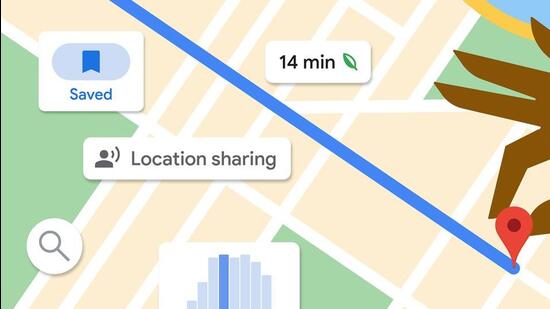BEST to integrate bus routes with Google Maps for seamless travel planning
Mumbai's BEST bus network will integrate with Google Maps, enhancing route planning and efficiency for commuters within a month.
Mumbai: The city’s public transport system is set to get a digital boost as the Brihanmumbai Electric Supply and Transport (BEST) undertaking gears up to integrate its extensive bus network with Google Maps. Within a month, commuters will be able to map all 402 bus routes operated by BEST’s fleet of around 2,900 buses, enhancing journey planning and efficiency.

At present, there is no mechanism to track BEST bus routes with real-time curated suggestions. This integration aims to fill that gap, allowing passengers to access optimal route options while also helping BEST streamline its operations. The transport body is working towards reducing the headway between two buses from the current 35-45 minutes to 15-20 minutes.
In February 2024, the Maharashtra government signed a Memorandum of Understanding (MoU) with Google to leverage artificial intelligence (AI) for public services. As part of this initiative, BEST collaborated with Google to integrate its bus routes into Google Maps. “We have had multiple meetings with Google, and we expect the service to go live for the public within a month,” said BEST general manager SVR Srinivas. “Passengers will be able to view our bus routes and plan their journey accordingly.”
Once launched, commuters will be able to input their starting point and destination into Google Maps. The application will then display the best possible travel options, factoring in live GPS data. The system will suggest multi-modal transport options, including, BEST buses, metro and local trains, auto-rickshaws and taxis for last-mile connectivity.
For instance, if a passenger is travelling from Malad to Ghatkopar, Google Maps will suggest the fastest route, which may include a combination of a BEST bus, metro, or train, with real-time updates.
For BEST, this partnership is not just about enhancing passenger convenience but also about gathering crucial data to improve bus services. With Google’s analytics, BEST will gain insights into passenger preferences, route demand, and fleet efficiency.
“We currently operate the same set of routes, but I have instructed my team to rationalise and optimise them based on real-time data. This exercise will be repeated every three to four months,” said Srinivas. “As new infrastructure like bridges and metro lines come up, we will adapt accordingly.”
Transport planners at BEST believe that rationalisation will help eliminate non-performing routes while introducing new ones where demand is high. For example, data could reveal corridors with heavy footfall of auto-rickshaw passengers, prompting BEST to introduce smaller, high-frequency bus routes in those areas.
BEST aims to increase its load factor (the percentage of occupied seats per bus) from the current 49% to 72%. To achieve this, it is reducing long-distance routes exceeding 10 km, which currently account for 30% of its network but are underutilised. Instead, the focus will shift to shorter, high-demand routes connecting railway and metro stations.
Additionally, BEST is pushing bus manufacturers to expedite fleet expansion. The current fleet of 2,900 buses is set to grow to 3,500 by June. Companies like Olectra have been asked to scale up production and ensure timely delivery. The target is to receive 100-150 buses per month, with an eventual goal of adding 2,100 AC electric buses to the fleet.
Stay updated with all the Breaking News and Latest News from Mumbai. Click here for comprehensive coverage of top Cities including Bengaluru, Delhi, Hyderabad, and more across India along with Stay informed on the latest happenings in World News.
Stay updated with all the Breaking News and Latest News from Mumbai. Click here for comprehensive coverage of top Cities including Bengaluru, Delhi, Hyderabad, and more across India along with Stay informed on the latest happenings in World News.






